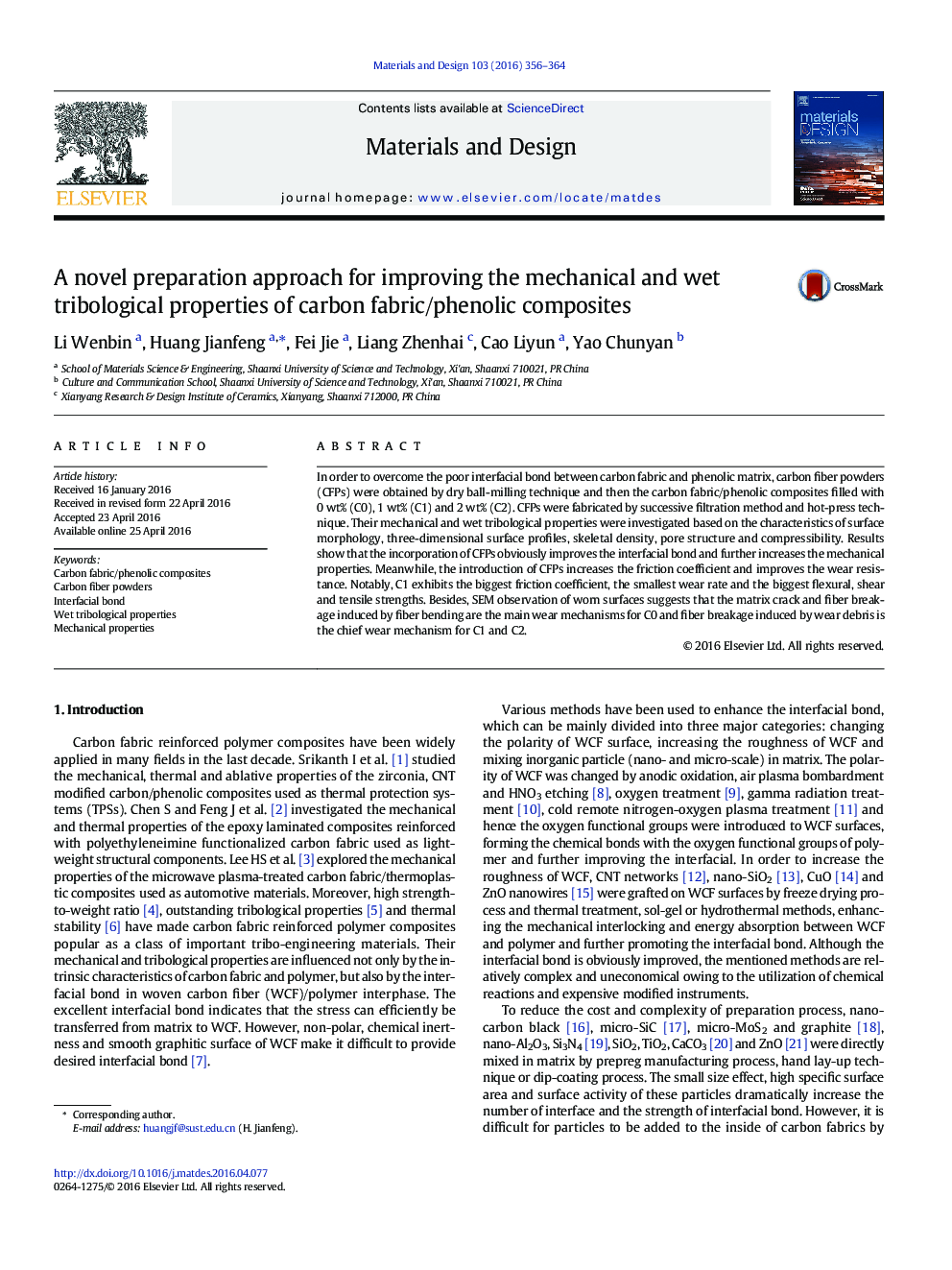| Article ID | Journal | Published Year | Pages | File Type |
|---|---|---|---|---|
| 828040 | Materials & Design | 2016 | 9 Pages |
•Carbon fiber powders were firstly introduced into carbon fabric composites.•The dry ball-milling, successive filtration and hot-press techniques were used.•The mechanical and wet tribological properties were enhanced.•The carbon fabric composites show different wear mechanisms.
In order to overcome the poor interfacial bond between carbon fabric and phenolic matrix, carbon fiber powders (CFPs) were obtained by dry ball-milling technique and then the carbon fabric/phenolic composites filled with 0 wt% (C0), 1 wt% (C1) and 2 wt% (C2). CFPs were fabricated by successive filtration method and hot-press technique. Their mechanical and wet tribological properties were investigated based on the characteristics of surface morphology, three-dimensional surface profiles, skeletal density, pore structure and compressibility. Results show that the incorporation of CFPs obviously improves the interfacial bond and further increases the mechanical properties. Meanwhile, the introduction of CFPs increases the friction coefficient and improves the wear resistance. Notably, C1 exhibits the biggest friction coefficient, the smallest wear rate and the biggest flexural, shear and tensile strengths. Besides, SEM observation of worn surfaces suggests that the matrix crack and fiber breakage induced by fiber bending are the main wear mechanisms for C0 and fiber breakage induced by wear debris is the chief wear mechanism for C1 and C2.
Graphical abstractFigure optionsDownload full-size imageDownload as PowerPoint slide
